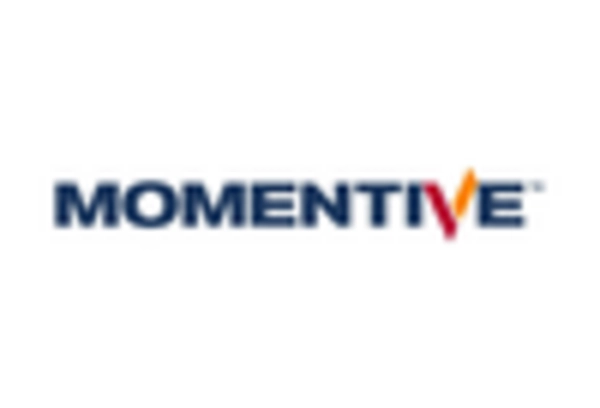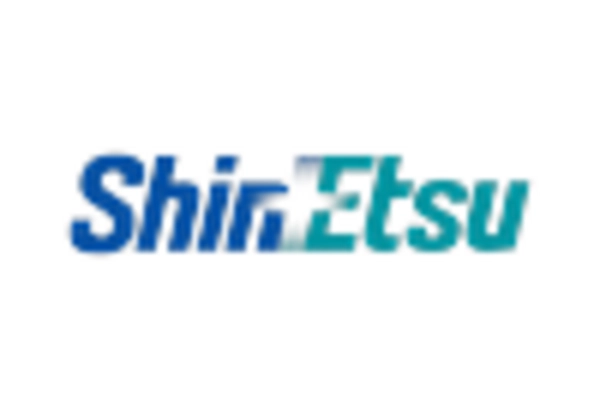Surge in Automotive Applications
The automotive industry is experiencing a transformation with the integration of advanced materials, and silicone gels are becoming increasingly relevant. These gels are utilized in various automotive applications, including sealants, adhesives, and coatings, due to their durability and resistance to extreme temperatures. The automotive market is projected to grow significantly, with an expected increase in electric vehicle production. This shift may lead to a higher demand for silicone gels, as they offer superior performance in automotive applications. Consequently, the Silicone Gel Market is likely to benefit from this trend, as manufacturers seek materials that enhance vehicle performance and longevity.
Rising Demand in Personal Care Products
The increasing consumer preference for high-quality personal care products is driving the Silicone Gel Market. Silicone gels are widely utilized in cosmetics and skincare formulations due to their unique properties, such as smooth application and moisture retention. The market for personal care products is projected to reach USD 500 billion by 2026, indicating a robust growth trajectory. This trend suggests that manufacturers are likely to incorporate silicone gels to enhance product performance and consumer satisfaction. As consumers become more aware of the benefits of silicone gels, their demand in the personal care sector is expected to rise, thereby positively impacting the Silicone Gel Market.
Expansion in Medical Device Manufacturing
The Silicone Gel Market is witnessing growth due to the rising demand for medical devices that require biocompatible materials. Silicone gels are extensively used in the production of medical devices, such as implants and wound dressings, owing to their non-reactive nature and ability to provide a protective barrier. The medical device market is expected to reach USD 600 billion by 2027, which may drive the demand for silicone gels. As healthcare providers increasingly prioritize patient safety and comfort, the incorporation of silicone gels in medical applications is likely to become more prevalent, further propelling the Silicone Gel Market.
Increasing Focus on Sustainable Materials
The trend towards sustainability is influencing various industries, including the Silicone Gel Market. Manufacturers are increasingly seeking eco-friendly alternatives to traditional materials, and silicone gels are emerging as a viable option due to their long-lasting properties and reduced environmental impact. The market for sustainable materials is projected to grow at a CAGR of 7% over the next five years, indicating a shift in consumer preferences. This focus on sustainability may encourage manufacturers to innovate and develop silicone gels that align with environmental goals, thereby enhancing their appeal in the Silicone Gel Market.
Growth in Electronics and Electrical Applications
The proliferation of electronic devices and the need for advanced materials in the electronics sector are contributing to the expansion of the Silicone Gel Market. Silicone gels are increasingly used in potting and encapsulation applications due to their excellent thermal stability and electrical insulation properties. The electronics market is anticipated to grow at a CAGR of 5% from 2025 to 2030, which may lead to a heightened demand for silicone gels. This growth is likely to be fueled by the ongoing advancements in technology and the increasing complexity of electronic components, positioning silicone gels as a preferred choice in the Silicone Gel Market.
















Leave a Comment